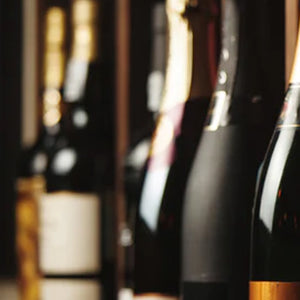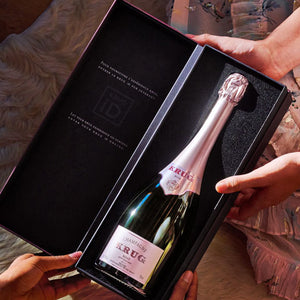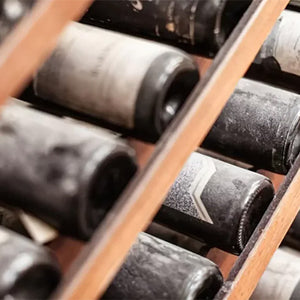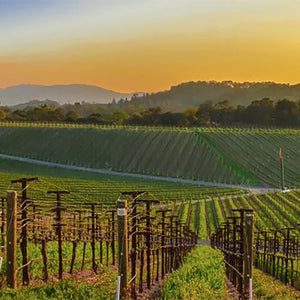
Your Guide to Aging Wine
Although the majority of wine (90-95% of global production) is best consumed within the first few years of its release, tapping into the potential of wines that get better with time is an unforgettable experience, and contrary to popular belief, building a versatile cellar isn't as hard as it seems. Best of all, doing so is accessible to all palate preferences and budgets.
Curious to get started / learn more? We’re breaking down everything you need to know about aging wine here.
Shop Our Favorite Wines to Age
How Do I Know Which Wines to Age?
The majority of wines are meant to be consumed in the near future, meaning within the first few years of their release. In fact, only about 5-10% of wines will get better with more than five years of age on them, and only 1% of wines will benefit from 10+ years of age.
To figure out which wines will benefit from more than a few years of age on them, there are a few things to consider, the first being price. If the wine cost less than $30, it’s almost definite that the wine will best be enjoyed in its youth. Beyond that, looking to benchmark producers within various regions is a great place to start (and quickly referencing a vintage report or two won’t hurt!) The most important factor that determines a wine’s ageworthy potential is its structure, which we’ll get to in the next question.
What Makes a Wine Ageworthy?
Whether red, white, or sparkling, a wine’s structure is its basis to cellar-worthy potential. When we talk about a wine’s structure, this mostly refers to its acid and tannins (if red). Wines with higher acidity will generally age better than those with lower acidity. With regards to tannins, more isn’t always better, but moreover the quality and integration of these components.
Shop Our Favorite Wines to Age
What Happens to Wine As It Ages?
Wine is a living product, meaning that it is in constant evolution. In terms of color, white wines will get darker with time, whereas red wines will lose their pigment. Regardless of color, acidity will continue to drop over time, which is why starting with a solid base is key. Tannins in red wine combine over time, which is one of the reasons that youthfully tannic wines become softer and easier to drink with age, as well as why sediment exists in older bottles – though not to worry, these loose particles are absolutely harmless to drink.
Much of this evolution is due to slow oxidation of the wine, which takes place via the wine’s cork. Over time, some bottles will lose a small percentage of their quantity due to evaporation. This is called ullage.
What Is the Best Way to Age Wine?
While the majority of wine drinkers don’t have an at-home cave or external cellar space, there are plenty of other solutions to be found. At-home wine cellars (sold in the form of refrigerator-type units) are excellent choices, as well as underground / temperature-controlled spaces. The most important factors to aging wine are temperature, humidity, darkness, and lack of vibration or movement. Ideally, wine cellars should hover around the 55-60 degree fahrenheit (12.5-15.5 degree celsius) mark. Wine bottles should always be stored on their sides horizontally, so as to keep the wine in contact with the cork.
Humidity is also a key factor in aging wine, as this desired moisture helps keep the cork from drying out and becoming brittle. When corks become brittle, more oxygen seeps into the bottle and causes higher amounts of evaporation. In addition to keeping the cork moist through wine contact by laying bottles on their side, ambient moisture is also key. This is the reason why many cellars develop mold, mushrooms, and dank smells – which in this case, are a great sign.
Absence of light and movement are also key, as both of these factors can disrupt—and even destroy—aging wine. This is also the reason why many wines are bottled in green bottles versus clear ones, so as to further protect the wine from light over time.
When Should I Open an Aged Wine?
Knowing when to open an aged wine is a very subjective experience. Peak drinking windows are greatly dependent on producer and vintage. Referencing a vintage report or few is always a good idea, and if you have numerous bottles of a specific wine, check in on them over time (and take notes!) to note the evolution for yourself. You’ll be surprised just how much a wine’s flavor profile changes over time!




